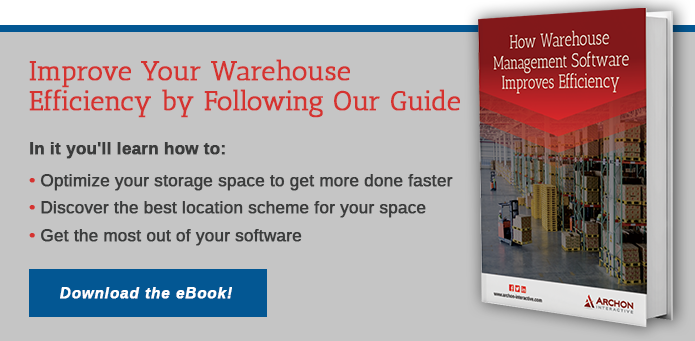
Which elements of your picking system lend themselves to greater warehouse productivity? While many people believe that simply picking faster is the answer to improved productivity, the truth is that there are a variety of factors that can influence your overall performance. Here are a few tips that will help you drive continuous improvement in your warehouse.
- Prioritize Accuracy - Whenever you tell your picking team that they need to pick up the pace, your accuracy will take a hit. Demanding that they work faster and faster without implementing checks for accuracy could be costing you far more than you imagine in productivity. Take some time to add up how much you are spending on refunds and re-worked orders due to accuracy errors, and you will quickly see that pushing for 100% accuracy will provide a huge boost in overall productivity.
- Maintain Your Stock - Entropy is a force of nature that we can only hope to stay ahead of. It isn't enough to implement a pick location system and then let your warehouse grow wild. You need to have a FIFO system to prevent the accumulation of outdated SKUs and old products. Make a habit of cleaning out obsolete or slow moving items every few months to avoid items getting shoved to the back of locations where they gather dust and take up unnecessary space.
- Look Closely At Your Changeover Process - No matter how fast your picking team is moving, the process of closing one order and going to the next one can be time consuming. Take a good hard look at how your team manages these changeovers. You may find that changeover points are causing a huge amount of down time and keeping your pickers from the floor longer than necessary. Find ways to streamline this process to boost your warehouse productivity.
- Use Smarter Dispatching - Your WMS should provide you with plenty of tools to enhance the way you dispatch orders. Dispatching orders in batches is a great way to improve warehouse productivity. You should also hone in on how you can eliminate single line orders from being dispatched by themselves. These single line orders are often called orphans because they end up alone on your picker's list. The problem is that they eat up a lot of time in steps and in changeover before your picker can move on to a better group of order lines.
Hopefully, you can see that there is more than one way to approach the problem of warehouse productivity. Telling your pickers to move faster isn't enough to get sustainable results. Instead, you need to look deeper and make changes to processes that could be getting in the way of a more productive workspace.




